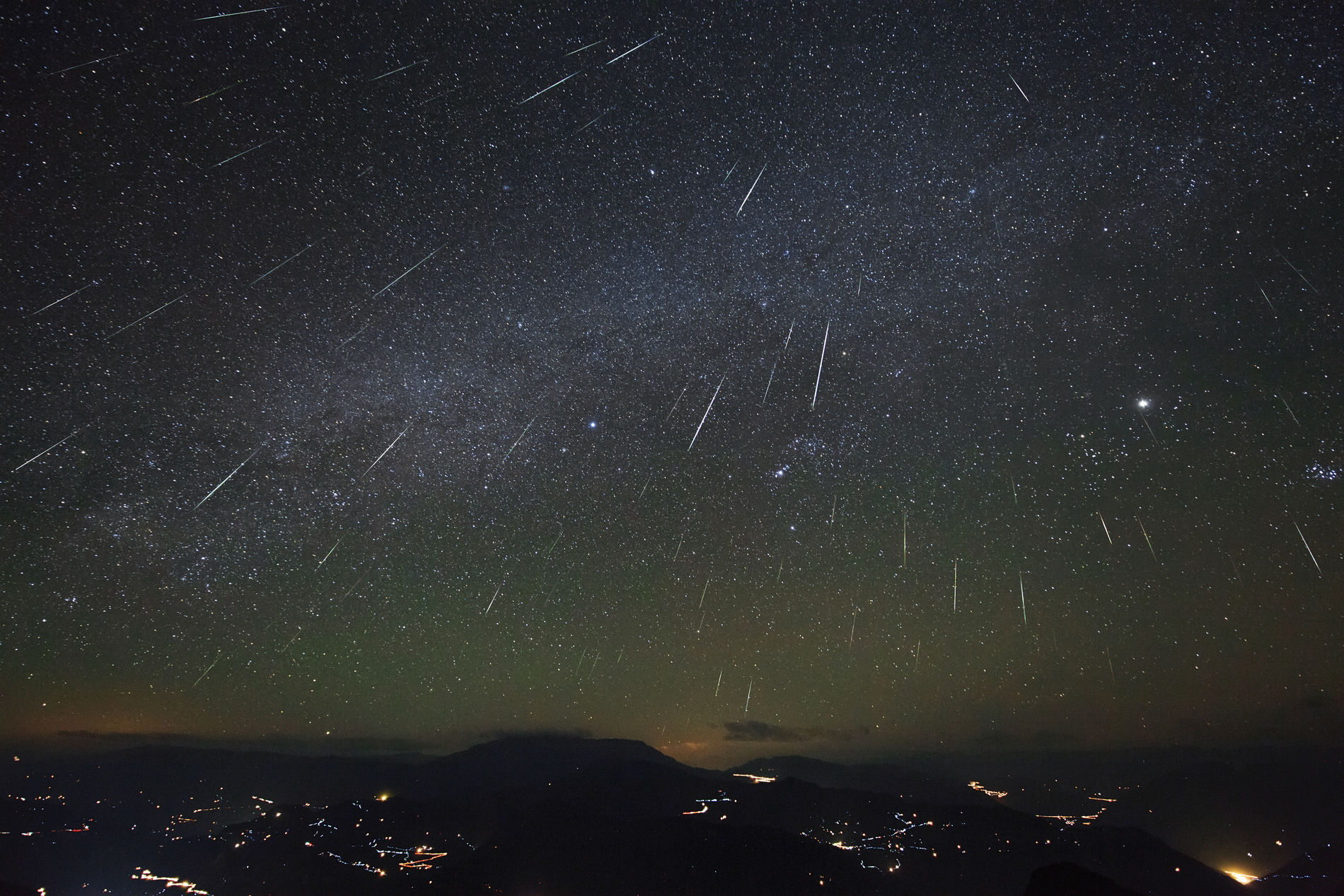
The Fleet Science Center building will be closed on Saturday, April 27, for our Annual Gala Fundraiser.

By Dr. Lisa Will, Resident Astronomer of the Reuben H. Fleet Science Center
The peak of the Geminid meteor shower occurs this weekend on the nights of December 13 and 14. The Geminids are one of the most consistent meteor showers year after year. This year there will be no bright moon to compete with so the show should be particularly good.
Meteor showers are named after the constellation they appear to radiate from, called the radiant. It doesn’t take an astronomy buff to guess that the radiant constellation for the Geminids is Gemini. Like most all meteor showers, the Geminids occur on the same dates every year. This is because meteor showers occur when the revolution of the Earth intersects the tail of a comet—or in the case of the Geminids, an asteroid—on its own rotation of the Sun. As the debris left behind by the celestial body hits the Earth’s atmosphere, it burns up, leaving a streak of light as it falls. Most meteors are smaller than a grain of sand and disintegrate long before they hit the Earth's surface.
There is no special equipment required to observe a meteor shower. The Geminids can be observed with the naked eye if you have an unobstructed view. For the Geminids, the best viewing is after midnight, on December 13 and the early morning of December 14, with Gemini reaching its highest point in the sky around 2 a.m. At the peak you may be able to observe dozens of meteors per hour! Meteors should be visible all through the night and on the nights before and after the peak also.
Here’s to wishing for clear skies!
More info:
http://earthsky.org/space/everything-you-need-to-know-geminid-meteor-shower
http://www.skyandtelescope.com/astronomy-news/observing-news/geminid-meteors-in-2015-120820154/